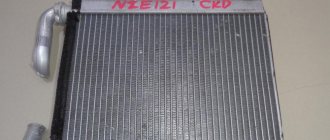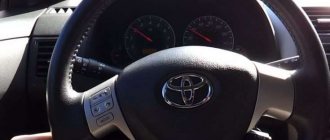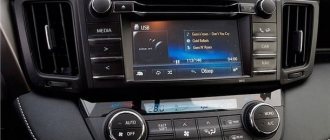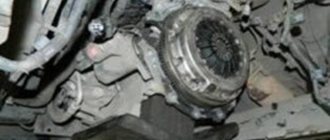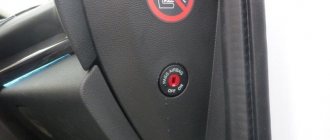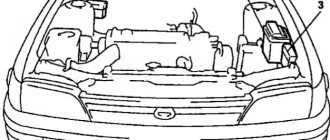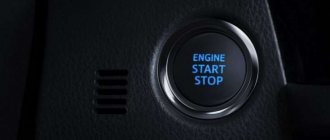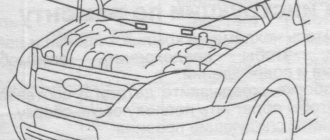Payment for goods and downloading of the book in electronic form (PDF format) is made on the website.
To do this, you need to find the book you are interested in and click on the “Buy” button. The price of the book is indicated on the button.
For convenience, the price on the website for residents of Russia, Belarus and Kazakhstan is presented in rubles.
For residents of Ukraine in hryvnias, and for all other countries - dollars.
After clicking on the “BUY” button, a payment window will open where you can select a payment system with which you can pay for the selected book using any bank card (Visa, MasterCard, MIR, etc.)
When you click on the “Pay by bank card” button, the Portmone payment system will open, which is the easiest way to make a payment.
In addition, the website offers four payment systems for payment:
- Yandex (payment from any bank cards, Yandex Money account, QIWI Wallet, terminals, etc.);
- Portmone (payment from any bank cards, Portmone account);
- PayPal (payment from any bank cards, PayPal account);
- WebMoney (payment from any bank cards, payment from WebMoney wallets).
Payment via Yandex Cashier
After selecting payment via Yandex, the Yandex Cashier payment system will launch, where you need to select a convenient payment method (bank card, QIWI, Yandex Money account, etc.)
After specifying payment details and confirming payment, payment for the goods will occur.
If you have a bank card in a currency other than the ruble, then the money will be debited from the card at the rate of the Central Bank of Russia at the time of the purchase.
This payment method is optimal for residents of Russia, Kazakhstan and Belarus.
Official website of the Yandex Kassa payment system https://kassa.yandex.ru
Payment via Portmone
After selecting payment through Portmone, the payment system will launch, where you need to select the payment method: bank card or Portmone account.
The price in the Portmone payment system is converted into dollars at the exchange rate of the Central Bank of the country where you are located.
If you have a bank card in a currency other than the dollar, then the money will be debited from the card at the rate of the Central Bank of your country at the time of the purchase.
After specifying payment details and confirming payment, payment for the goods will occur.
Official website of the Portmone payment system https://www.portmone.com
Design and symbols on the Corolla instrument panel
Toyota Corolla Spacio in 1997 was equipped with two powertrain options. Both engines were gasoline and were paired with an automatic transmission. Volumes are 1.6 and 1.8 liters, with a power of 110 and 120 horsepower, respectively. Moreover, the more powerful unit was installed only on a car with all-wheel drive. Toyota Corolla Spasio with a smaller engine capacity had only front-wheel drive.
Fuel consumption for the cars varied from 7.6 to 8.8 liters per hundred kilometers, but when driving quietly at 60 km/h, the Spacio consumed only 5 l/100 km.
The first generation had many different trim levels, from the most budget ones to the expensive 1.8 black sports G package.
READ MORE: Where and how a Toyota Corolla is assembled
Controls
Payment via PayPal
After selecting payment via PayPal, the PayPal payment system will launch, where you need to select the payment method: bank card or PayPal account.
If you already have a PayPal account, then you need to log into it and make a payment.
If you do not have a PayPal account and you want to pay using a bank card via PayPal, you need to click on the “Create an Account” button - shown with an arrow in the picture.
PayPal will then prompt you to select your country and provide your credit card information.
After specifying the information required to make the payment, you must click on the “Pay Now” button.
Official website of the PayPal payment system https://www.paypal.com
Payment via WebMoney
After selecting payment via WebMoney, the payment system will launch, where you need to select the payment method: bank card or WebMoney wallet.
If you already have a WebMoney wallet, then you need to log into it and make a payment.
If you do not have a WebMoney wallet and you want to pay in another way, you need to select any of the methods that WebMoney offers and make the payment
After specifying payment details and confirming payment, payment for the goods will occur.
Official website of the WebMoney payment system https://www.webmoney.ru/
Downloading a book
After successfully completing the payment (by any method) and returning to the KrutilVertel store from the payment system website, you will be taken to the successful payment page:
On this page you need to indicate your e-mail, where access to download the book will be sent.
If you are already registered on our website, then simply follow the link to your personal account.
The book you purchased will be in your personal account, from where you can always download it.
Please note that after making the payment, you need to return back from the payment system website to the KrutilVertel website.
If for some reason you did not return back to the site and closed the payment system tab with a message about the successful completion of the payment, please let us know - we will send you a letter indicating access to download the book.
TOYOTA COROLLA
Location of instruments and indicators in the instrument cluster: 1 – fuel filter status indicator (for diesel engines). 2 – signaling device for turning on the vehicle speed limiting system (see “Vehicle speed limiter”) 3 – signaling device “Check engine” (with an orange filter). Lights up when the ignition is turned on and lights up when the engine is started. Immediately after starting the engine, the warning light should go off. If the warning light comes on while the engine is running, it indicates a malfunction in the engine management system. In this case, the control unit switches to the backup program, which allows you to continue driving. When the indicator lights up, it is necessary to check the control system and eliminate the malfunction.
Long-term operation of the vehicle with the warning light on is not recommended, as it can lead to increased fuel consumption, deterioration of the vehicle's traction characteristics and engine breakdowns.
If the indicator flashes, it means that there is no stable spark generation in the ignition system. Reduce engine speed until the warning light goes off. Contact a service station as soon as possible or have the problem repaired.
5 – electronic type tachometer shows the engine speed. The scale is graduated from 0 to 8, division value is 0.2. To find out the crankshaft rotation speed in min–1, you need to multiply the tachometer readings by 1000.
6 – left information display. When the ignition is turned on, the following information is displayed on the left information display: A – fuel level; B – liquid temperature in the engine cooling system; B – position of the gear lever.
7 – the left turn signal indicator (in the form of an arrow with a green filter) lights up with a flashing light when the left turn signal is turned on (synchronously with it). Flashing of the indicator with double frequency indicates a burnt-out lamp in any left turn indicator. If the indicator does not light up or lights up constantly, it means that there is a malfunction in the electrical circuits of the turn signals.
8 – the headlight high beam indicator (with a blue filter) lights up when the headlights high beam are turned on.
9 – the external lighting indicator (with a green filter) lights up when the side lights in the headlights and rear lights are turned on.
10 – the right turn signal indicator (in the form of an arrow with a green filter) lights up with a flashing light when the right turn signal is turned on (synchronously with it). Flashing of the indicator with double frequency indicates a burnt-out lamp in any right direction indicator. If the indicator does not light up or lights up constantly, it means that there is a malfunction in the electrical circuits of the turn signals.
11 – the speedometer shows how fast the car is currently moving. The scale is graduated from 0 to 240, the division value is 5 km/h.
13 – the rear fog lamp activation indicator lights up when the light in the rear fog lamp is turned on.
14 – indicator of the state of the anti-lock braking system and emergency braking system. The indicator lights up orange when the ignition is turned on, and goes out after the engine starts. If the indicator lights up when the engine is running, it indicates a malfunction of the anti-lock braking system.
In all other cases, the lighting of the anti-lock braking system indicator indicates a malfunction that must be repaired at a specialized vehicle service station, since in all cases braking occurs without the participation of the anti-lock braking system and the emergency braking system.
15 – status indicator for the automatic headlight leveling system (on vehicles equipped with gas-discharge headlights).
16 – traction control system status indicator. When the ignition is turned on, the indicator lights up and goes out after a few seconds.
17 – fault indicator of the additional passive safety system. The warning light (with a red filter) lights up when the ignition is turned on and stays on for about 6 seconds. and goes out if the system is working properly, and does not go out (or lights up while driving) if there is a malfunction in the airbag system.
If the warning light comes on, immediately contact a car service center. In addition to the possible failure of the airbag in an emergency, it may unexpectedly deploy while driving, which will lead to serious consequences.
18 – engine preheater status indicator (for diesel engines).
19 – seat belt warning light. Lights up red when the ignition is turned on if the driver and front passenger seat belts are not fastened. Simultaneously with the indicator light coming on, an intermittent buzzer sounds.
Be sure to wear your seat belt and do not carry passengers in your vehicle who are not wearing seat belts!
21 – lighting control of the instrument cluster and button for switching modes of the right information display (mileage counter, reset of daily mileage readings).
22 – gear engaged indicator (for cars with manual and robotic gearboxes).
23 – emergency indicator of vehicle systems. Lights up with a flashing light when faults are detected in the vehicle systems, which are displayed on the right information display.
24 – button for switching modes of the right information display (outside air temperature, date, fuel consumption, average speed).
25 – the parking brake activation and brake system status indicator (with a red light filter) lights up when the ignition is turned on if the brake fluid level in the master cylinder reservoir or the parking brake lever is raised excessively.
Driving a vehicle with the warning light on is prohibited.
28 – the battery discharge indicator (with a red filter) lights up when the ignition is turned on. Immediately after starting the engine, the warning light should go off. Illumination of the indicator or its full glow when the engine is running indicates a lack of charging current caused by a malfunction of the generator or voltage regulator, as well as weak tension (or breakage) of the auxiliary drive belt.
Driving a vehicle with the warning light on is prohibited: in addition to the battery being completely discharged, this may indicate a short circuit in the charging circuit.
Problems when paying with bank cards
Sometimes difficulties may arise when paying with Visa/MasterCard bank cards. The most common of them:
- There is a restriction on the card for paying for online purchases
- A plastic card is not intended for making payments online.
- The plastic card is not activated for making payments online.
- There are not enough funds on the plastic card.
In order to solve these problems, you need to call or write to the technical support of the bank where you are served. Bank specialists will help you resolve them and make payments.
That's basically it. The entire process of paying for a book in PDF format on car repair on our website takes 1-2 minutes.
If you still have any questions, you can ask them using the feedback form, or write us an email at [email protected]
What do the icons on the Toyota dashboard mean?
How the pictograms on the Toyota dashboard are deciphered
Of course, during normal operation of the car, you will not at all need to know which symbol-icon on the Toyota dashboard means what, since with proper operation and timely maintenance of the car, they will never bother you.
But life teaches us motorists that we need to be prepared for any twists of fate. As they say, even an old woman can fail, which means that even the world’s largest automaker can make certain mistakes. This means that during the life of the car, even with careful adherence to all regulations and care for your iron horse, the dashboard in the car may one day flash with telltale lights, as if it were a New Year tree. The reason for all this may simply be a banal factory defect. Unfortunately for us, no one is immune from errors on the assembly line.
Before trouble happens and you have to peer into the dashboard while looking through a certain manual or our article, we hasten to warn our motorists that some indicators on certain trim levels of Toyota models are quite rare today. Therefore, we publish in our article a list of the most common designations today from the most popular Toyota cars.
Don't be afraid, friends, of the warning symbols on your dashboard.
At the end of the introduction, we would like to say that the warning signs on the dashboard light up every subsequent time the ignition is turned on. This is normal practice, which means that the car's computer begins checking sensors and all car systems. You should only panic if these icons do not go out.
Finally, it is also important to remember that some warning signs can alert drivers to common vehicle ailments without naming a specific problem. When such an indicator appears on the dashboard, you must immediately contact the service for diagnostics.
1. Airbag Warning Indicator - This indicates problems with the airbag system, which should be checked immediately by a certified service center if you are concerned about your safety. The icon may also appear when you manually disable one or more airbags.
2. Prevention of malfunction of the anti-lock braking system - it indicates that an error has been detected in the anti-lock braking system ABS (which prevents the wheels from locking during heavy braking and helps the driver maintain control over the car) or the sensor itself needs to be replaced. This symbol icon may also appear if too much dirt has adhered to one of the sensors, as well as if you used your car in sports mode with fast acceleration and sharp braking, which could or allowed it to “deceive” the ABS system itself. The same effect can be achieved by a car stuck in mud or snow, where one or more wheels will slip in place.
3. The check engine light is probably the scariest dashboard light out there. Many motorists, seeing it, immediately begin to think that an engine breakdown has occurred. However, things may not be so sad. The appearance of this icon on the dashboard may inform you that the sensor itself has failed or the engine has malfunctioned and it has stopped working in optimal mode, and because of it the engine emits more harmful substances into the atmosphere than it should.
Indeed, you should be wary only if, at the same time as such an indication appears, the engine begins to make extraneous sounds or it loses traction. But in any case, friends, visiting a service station is a MUST for you!
4. Oil pressure icon - in simple terms, we can say the following, if this icon-symbol lights up, it will mean that the engine oil pressure is too low or too high, so you need to check the engine oil level before start further driving the car. The indicator can also warn about a malfunction of the oil pump, that it is damaged, or a plug in the oil line. Incorrect oil viscosity may also be another reason for this pictogram to appear.
5. Low engine coolant temperature - tells us that the coolant in the engine is too cold and too low for the engine. If the indicator on the dashboard does not disappear after the car has been driven for several kilometers, then this will mean that something has gone wrong, in which case you need to contact a mechanic. The thermostat, that is, the valve that allows coolant to pass through the radiator, or the same electric fan can mistakenly run in a constant mode with maximum engine cooling.
This problem cannot be called serious, but still, with it, an engine operating not at the optimal temperature will consume more fuel and emit more exhaust gases into the atmosphere than it should.
6. Low beam indicator - tells us that low beam or daytime running/parking lights are on. If the indicator has an exclamation point, then you should check the headlights themselves, as one or more bulbs in them have burned out.
8. Warning sign of low washer fluid level - it informs us that it is necessary to add washer fluid to the reservoir.
10. Electric power steering system warning - indicates to us that there is a problem with the electric power steering. In the neglected version, you yourself will feel the presence of a problem with your own hands, when the Toyota steering wheel becomes heavy, just like on a KamAZ. It's not dangerous, but it's not pleasant either. Visit a friends auto repair shop.
11. Door open warning - this means that one or more doors are open or not fully closed.
12. Parking brake indicator - informs us that the parking brake is raised. If you release the parking brake and the symbol does not disappear, then most likely there is a problem, so you should check the vehicle's brakes. Brake rotors or pads may need to be replaced.
13. Warning about increased coolant temperature - means that the engine is too hot and irreversible consequences will soon occur. Please turn off the engine and call a mechanic, or have the car towed to the nearest auto repair shop. If the indication is triggered during a cold engine start, this warning may be caused by a short circuit, as well as a faulty sensor or computer error. In any case, friends, it is better to take your car to a mechanic.
14. The fog light indicator informs us that the fog lights (headlights) are on.
15. Side lights indicator - will inform us that the parking lights in the car (daytime running lights/parking lights) are ON.
16. High beam pictogram - informs us that the high beam in the car is on. Please make sure that at night you do not blind passing and oncoming motorists.
17. Arrows indicating the operation of turn signals - warn us about the turn signals being turned on or the hazard warning lights being working.
18. Battery warning light - basically it tells us that the battery is not charging correctly or it is not charging at all. Basically, this symbol icon (indicator) is displayed when the engine is turned off and the light or radio is on.
19. Seat Belt Icon - Indicates that you or your passenger(s) must fasten your seat belt.
20. Transmission operation indicator - indicates a malfunction in the transmission. It usually appears on cars with automatic transmission when the gearbox for some reason ceases to properly perform its direct duties. In this case, if the indicator turns on, we do not recommend drivers to move the car independently.
21. Fuel Filter Warning Symbol - If the indicator remains illuminated, this indicates that water has been detected in the fuel filter. Don’t panic, friends, at the moment when this warning appeared on the dashboard, you were or are driving and you have enough time to visit a car service center and get rid of the water.
22. Glow plug indicator (pre-plugs) - this symbol-icon will appear at a time when it is cold outside and it will inform you that the spark plugs inside the engine have begun to warm up the combustion chamber (in diesel engines). Do not start the engine at such a moment; wait until the indicator goes out. If it does not disappear or go out, and stays on for too long, then your car has a faulty glow plug or they are too cold.
23. The same indicator that we mentioned in point No. 13, but of a different color. Please turn off the engine because it is too hot.
24. The STO icon is normal if it appears when you start the car, but if it continues to do so while you are driving the car, then together with No. 13 or No. 5 it will really mean that you should stop.
25. Cruise control indicator - tells us that the cruise control system is turned on. Typically, you can disable it yourself by simply pressing the brake.
26. Gear position indicator - shows us what gear you are in or in.
27. The same indicator that we mentioned in point No. 8. It means that it is necessary to add fluid to the windshield washer.
28. The same indicator that was in point No. 9 - The car needs to be refueled.
29. Vehicle stability control or Traction Control warning light - if the indication does not go off, then it warns us that there is a problem with one of these systems.
30. Tire pressure indicator - it means that the pressure in one or more tires is low or, conversely, too high. This is a very convenient warning system that will warn us about a sudden tire puncture.
31. Traction control disable indicator - it warns us that we (you) have disabled the traction control system.
32. Vehicle Slip Indicator - If it turns on when driving on snow, ice, mud or very wet roads, this will indicate that the vehicle is slipping and this traction control system is working to provide maximum traction.
33. The Overdrive OFF indicator informs us that the overdrive system is turned off.
34. Automatic transmission oil temperature warning - this symbol (indicator) means that the transmission oil temperature is too high, you should reduce your speed or even stop to allow the oil to cool. Incorrect transmission oil can cause transmission components to overheat. Take your car to a service center if this problem persists.
35. Lane Keeping Assist - this indicator indicates problems with the system that keeps your car in its lane. Please don't take your hands off the steering wheel.
36. Adaptive Front Lighting is an indicator icon for an automatic system that switches between low and high beam headlights; if it lights up, it means that the system is not working correctly.
37. The same indicator that was mentioned in point No. 10.
38. Pre Collision System - this symbol warns us that the system that helps prevent a frontal collision is not working. Drive the car as carefully as possible and contact a car service to resolve this problem.
39. Parking brake indicator - informs us that the parking brake on the machine is on.
40. Eco/Eco mode indicator - it tells us that we are driving (you are driving) in ECO mode to save fuel.
In order to thoroughly study the material part of your Toyota, do not forget, friends, to read the operating instructions supplied with the car itself. Try to drive carefully and do regular car maintenance on time; always use only original spare parts and technical fluids designed specifically for your car model.


